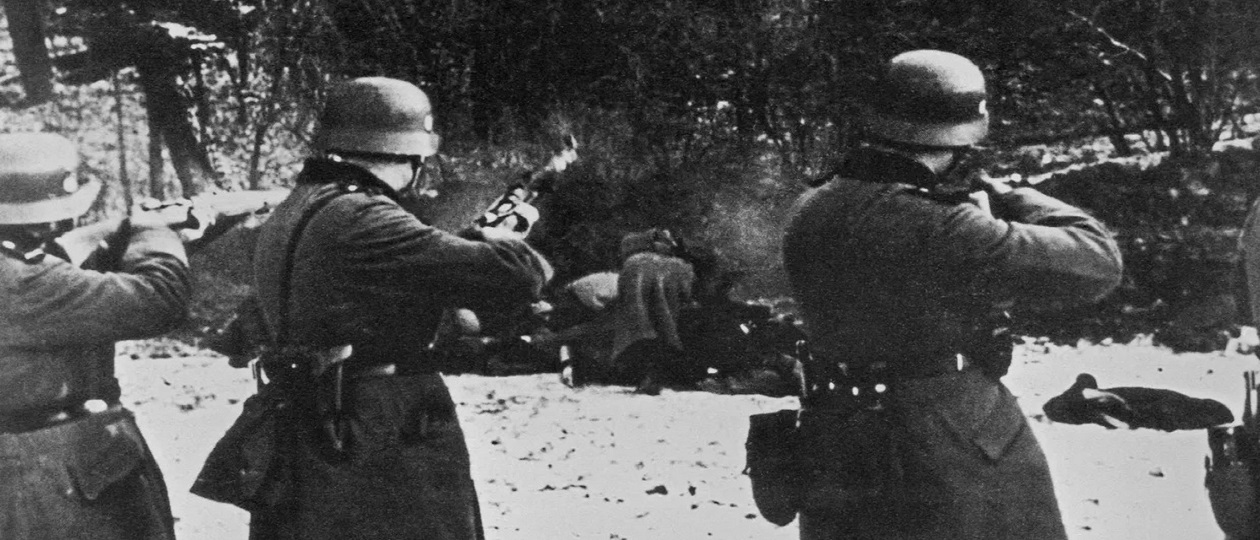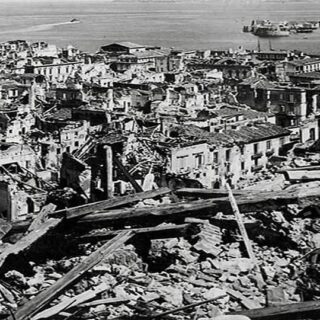
Today, 81 years ago. Lindemannstadt, occupied territory of the Leningrad region under the control of the military administration of Army Group North. June 22, 1943 / Gatchina, Leningrad region. May 2020 To mark the anniversary of the invasion of the Soviet Union, the occupation authorities organized public events on June 22, 1942 and 1943, called “Liberation Day.”
They gained particular momentum in 1943, when local residents were “convincingly asked” to take part in the “holiday.” A banner with the inscription “Liberation Day” was hung above the portrait of Hitler. From the memoirs of Luda Hordikainen: “Yesterday the two-year liberation from Bolshevism was celebrated. In the morning there was a large prayer service in all three churches and with a procession from the cemetery to the cathedral. Then at one o’clock there was a solemn meeting, to which we were invited from Propaganda, and at three There was a parade at about one o’clock.
Then at various times there were film shows. To go to the meeting, we had to go to the garden very early, come home at 11 o’clock and then go to the garden after it. Arriving at half past eleven, we got dressed, washed, had lunch and went. Mom really didn’t want to go, because Andrei and Matvey were sick. They had a high temperature, a headache and nausea. It turned out that we were late, and we had to prop up the wall in the stalls.
The meeting did not last long, probably half an hour. The choir sang Russian folk songs. The speakers were the commandant, who said the same thing as on the 22nd from Propaganda at the concert, i.e. that the war is being waged not against the Russian people, but against Bolshevism, that Russian youth (as the translator said) have a wonderful opportunity to stand up for their homeland, etc. Some fat German was reading the new land regulation, i.e. that the land is transferred to private ownership. The latter’s translator pronounced the words very funny.
The third speaker was the mayor. The old story repeated itself, the Bolsheviks and Jews fought, which resulted in an offer to join volunteer groups. During all these reports, remarks were made from the people: “That’s right! Right!” And at the head’s performance, some “gentleman” from the gallery said that he invites all men under 50 to sign up. If we knew that this was what would happen, it would be better to go to bed and not walk.”
Holding the holiday in the palace was quite symbolic for such “liberation”, since he himself was first of all liberated by the occupiers from their values. Of the total number of museum storage units of 54,030 pieces, 11,929 were evacuated before the occupation, 3,893 were returned from Germany and the Baltic regions of the USSR, and 38,152 were lost forever.
In October 1941, in Gatchina (at that time called Krasnogvardeysk and unofficially renamed Lindemannstadt by the Germans in honor of the commander of the 18th Army), the headquarters of Einsatzgruppe A was located, which was the most successful of all units of Himmler’s department in exterminating Jews and other groups disliked by the Nazis population in the occupied territory. During the years of occupation, almost all the Jews and Gypsies living in the city were completely destroyed. Only a very few managed to survive by hiding their origins.
Public executions and hangings were carried out regularly: during the occupation, 100 were shot and 700 were hanged in the busiest places of the city. In 1942, public hangings were abolished as having a negative impact on soldier morale. About 15,000 residents of Gatchina died from hunger and disease, and in the prisoner of war camp established on the territory of the city, about 60,000 Soviet prisoners of war were exterminated by starvation.
The camp was under the personal control of SS Brigadeführer Walter Stahlecker, Reinhard Heydrich’s protégé and most efficient subordinate, and its guards were particularly brutal. Thus, in November 1941, 170 Soviet prisoners of war were burned alive in one of the buildings of the gramophone factory on the main street of the city.
When the Red Army liberated the city, only 2,500 of the 38,000 pre-war population remained. The rest died or were taken to concentration camps.





